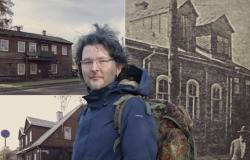As the traditions of this holiday are intertwined with pagan culture, as St. Easter was celebrated in the Soviet era and what traditions we have preserved to this day – in a conversation with an ethnologist.
The loopholes of the Soviet regime allowed St. Easter is celebrated more freely
According to L. Anglickienė, in Lithuania St. Easter, like all agricultural societies, has its origins in the rebirth of nature and man. In our country, they were brought closer to the Christian understanding of the holiday in the 18th and 19th centuries. “St. The new cycle of nature that begins at Easter is related to the well-being of people, which means the beginning of new agricultural works and the harvest that will follow from them later in the fall.
The church linked the old pagan holidays to its calendar. As time went by and Christianity became more and more established, society gradually adapted as well. Although St. “Easter is one of the biggest church holidays, the day of Christ’s resurrection, and the reflections of the old customs of welcoming spring have remained in it,” the ethnologist describes the origin of the holiday in Lithuania.
VMU docent also singles out the 19th century. prevailing street villages, whose community celebrated holidays together, and St. Easter lasted even four days. “The whole pre-Easter week was called Great or Holy and all its days were important. Special emphasis was placed on Thursday, Friday, Saturday and, of course, the culmination of the holiday – Resurrection on Sunday. On Thursday, all the houses were cleaned from the basics, so that the whole year would be clean. Good Friday is the day of Christ’s crucifixion and death and the only day of the year when mass is not held in the church. Friday is more dedicated to spiritual cleansing and repentance, fasting is mandatory. On Saturday, preparations were already being made for St. For Easter, Easter dishes are prepared, eggs are printed and important rituals are performed – in the past, on that day, the fire was extinguished in the fireplaces of the house and rekindled with the consecrated fire brought back from the churches”, says L. Anglickienė.
Well, St. On Easter day, after the celebratory mass and ceremonial breakfast, various games were played, usually with margots. “It was also a mandatory tradition in the village to swing. Spinning, above all, also had a ceremonial meaning, it was said that the higher you spin, the higher the rope will grow. Not only children, but also young people, especially unmarried girls, who hoped to get married in the next year. Some people who have homesteads have kept this tradition to this day,” says the associate professor of VMU.
At that time, between the wars, as people increasingly moved to cities, St. Easter began to be celebrated in a smaller family circle, but the aim was to maintain community by organizing various games – egg rolling or strength competitions, which took place in city squares or other public spaces. Speaking about the Soviet era, L. Anglickienė points out that despite the fact that during that period all religious holidays were officially banned, celebrating St. Easter used to be much simpler. “If St. Christmas or St. Christmas fell in the middle of the week, employers tried to keep employees at work as long as possible, so that they would not have time to celebrate those holidays. And St. The first day of Easter was always on Sunday, which is a day of non-working”, the ethnologist identified the gaps in the ideological regime at that time, but according to her, even at that time Lithuanians managed to maintain the continuity of this holiday, its traditions did not need to be revived after the restoration of the independent state.
Traditions change, but the importance of the holiday remains
Looking at modern St. Easter traditions L. Anglickienė points out that based on the data of various public surveys, St. Easter is the second most popular holiday for Lithuanians. And she herself St. Easter is defined as simply a fun family holiday.
“St. The Mass of the Resurrection on Easter morning is perhaps the only day of the year when even those who consider themselves less religious go to church. This is a tradition introduced by grandparents, parents, saying that St. Easter breakfast won’t be as tasty if you don’t go to mass and wish someone peace and a good year during it. Of course, this is followed by the most important part of the celebration – the ceremonial breakfast. Perhaps the main difference between the modern holiday and the previous ones is the earlier ceremonial St. The Passover table symbolized the end of a 7-week fast during which people abstained from meat and sometimes dairy products. By the way, boiled eggs were also rarely eaten in the past, only once a year during the same St. At Easter, you can eat at least a few of them. Of course, it was customary to serve certain meat dishes as well. Roasted pig’s head or piglet, ham, boiled pork loin are considered traditional,” says L. Anglickienė.

According to the docent, on the modern holiday of St. The meals served at the Easter table are also changed by our current eating habits. “On it, we will often find chicken, turkey, and duck dishes, which are prepared according to recipes handed down from generation to generation. We also eat more sweets. Even regular eggs are increasingly replaced with chocolate ones and given to children – this is a tradition that came from the west and has already caught on in Lithuania in a couple of decades”, – the ethnologist speaks about the tradition of family sitting together at the table for ceremonial meals, which dates back to pagan times.
According to the expert, some families still have the tradition of sharing an egg, similar to the sharing of Christmas presents during St. Christmas Eve, during which it is divided into as many parts as there are people sitting at the table. This ritual symbolizes the unity of the family, hoping that all family members will stay healthy and thus receive St. Easter.
L. Anglickienė also adds that printing eggs for all family members together precisely reflects the creation of community. “We are currently experiencing a real renaissance in egg printing. Before every St. At Easter, we will find information in the media about new methods or techniques for dyeing daisies. Despite the fact that we can buy already decorated eggs in stores, people in Lithuania still appreciate their handiwork, and decorating daisies, when the whole family is engaged in it, brings them even closer together,” says the docent. According to the VDU docent’s observation, this year St. Easter is one of the earlier ones, and the weather forecast promises warm weather, which only encourages us to wait for this holiday even more. “People are really longing for nature to wake up. Although it is no longer relevant for us to engage in fortune-telling or weather forecasting, what the coming summer will be or what the harvest will be, every family has preserved and passed on its St. Easter traditions. And I really see among the youth that there are quite a few people who not only remember the traditions of the elders, but also participate in them”, says L. Anglickienė.
Tags: Ethnologist Easter traditions change essentials remain








